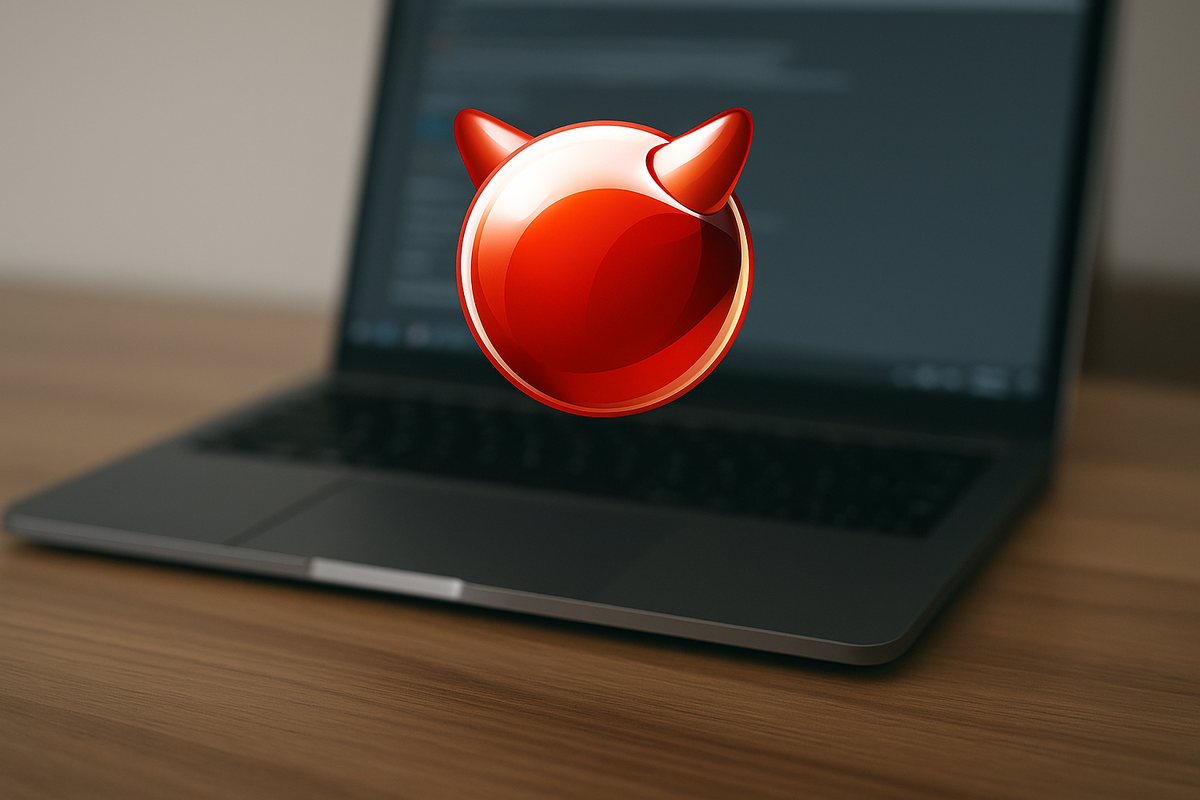FreeBSD on Modern Laptops: What’s Changed in 2025
FreeBSD is now more laptop-friendly than ever. In 2025, it brings improved Wi-Fi, graphics, power management, and smoother desktop support—making it a strong choice for developers and open-source users on modern hardware.

Introduction
Running FreeBSD on laptops has historically been a bit of an adventure — one that often required patience, manual tweaking, and a willingness to read a lot of mailing list threads. But as we move into 2025, that experience is changing fast.
The FreeBSD Project has quietly made major strides in hardware compatibility, driver support, and performance tuning for modern notebook hardware. Thanks to ongoing community and corporate contributions, FreeBSD is now more laptop-friendly than ever.
Let’s dive into what’s new and why it matters.
1. Better Hardware Support Out of the Box
The FreeBSD 15.0-CURRENT branch (and even 14.3-STABLE) has seen significant driver updates, particularly for:
- Wi-Fi (802.11ax / Wi-Fi 6E): New Intel AX200/AX210 chipsets are now supported without requiring external patches. This makes wireless networking on modern ThinkPads, Framework laptops, and Dell XPS systems nearly plug-and-play.
- Graphics Drivers: The DRM KMOD packages now track the Linux 6.6 kernel, bringing better Intel Arc, AMD RDNA3, and Radeon 7000-series GPU support. That means smoother X11 and Wayland sessions — even for those running KDE Plasma 6 or GNOME 46.
- Touchpads & Input Devices: Improved libinput integration and HID over I²C driver updates have fixed multi-touch gestures on newer laptops.
- Suspend/Resume: ACPI and power management have received upstream refinements that make sleep and resume more reliable, especially on laptops with hybrid graphics.
2. Power Management Improvements
Battery life has always been one of the weakest points for FreeBSD on laptops, but the gap is closing:
- New
powerd++utilities now integrate better with modern CPUs, including Intel hybrid architectures (P-cores/E-cores). - devd hooks can automatically switch CPU governors, disable unused interfaces, and even adjust brightness on battery events.
- The ZFS adaptive ARC memory pressure system helps prevent excessive swap use, extending runtime on laptops with limited RAM.
Together, these improvements make FreeBSD a much more viable daily-driver OS for mobile professionals and developers.
3. Audio and Bluetooth Stack Updates
With the migration to the new sound subsystem and BlueZ 5 compatibility work, audio and Bluetooth peripherals behave more consistently.
- USB-C dongles and Bluetooth headsets (especially those using SBC-XQ and AAC codecs) now connect more reliably.
- The
snd_hdadriver supports more modern audio controllers, fixing “no sound after resume” bugs seen on newer Intel laptops.
4. Community-Driven Laptop Testing
The FreeBSD Laptop Testing Initiative, launched informally in late 2024, now provides a wiki with verified hardware reports.
- Users contribute “known good” configurations for ThinkPad T14, Framework 13, HP DevOne, and ASUS ZenBook models.
- Each entry details installation steps, supported devices, and workarounds.
This collaborative effort means you can check compatibility before you buy — something that’s been standard in the Linux world for years.
(You can browse the list on the FreeBSD Wiki under “LaptopCompatibility” and even add your own results.)
5. A Smoother Desktop Experience
Desktop environments like KDE Plasma 6, GNOME 46, and XFCE 4.20 are now available directly via pkg with Wayland support enabled by default.
Combined with better graphics acceleration, FreeBSD feels noticeably more polished on modern hardware.
Even suspend/resume within Wayland sessions works reliably on several popular laptop models.
6. Why It Matters
For years, FreeBSD was known mostly for its rock-solid servers and embedded systems. But in 2025, it’s quietly becoming an excellent platform for developers, sysadmins, and open-source enthusiasts who want a secure, UNIX-clean, laptop-friendly environment.
With improved drivers, smoother power handling, and active community testing, the gap between “server FreeBSD” and “desktop FreeBSD” has never been smaller.
Conclusion
FreeBSD’s renewed focus on hardware compatibility and user experience makes 2025 a great year to revisit the idea of running it on your laptop.
If you tried FreeBSD a few years ago and found your Wi-Fi or suspend functions broken — it might be time to give it another spin.
Download the latest FreeBSD 15.0-CURRENT snapshot or the newly released 14.3-RELEASE, and see how far it’s come.